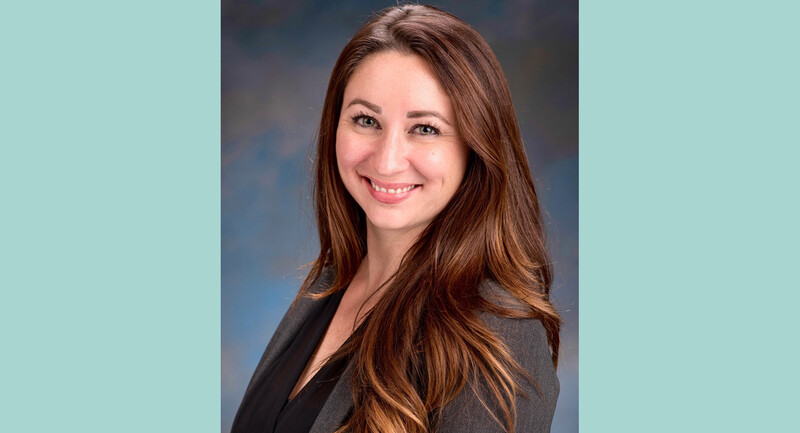I’ll never forget the moment I hit “send” on the organization-wide email that started with, “This is the job I’ve always wanted, yet it’s not the right job for me at this time.” I was utterly broken, desperately trying to live up to my leadership role in education while struggling with managing my own mental health. I was ignoring my needs while my consciousness whispered to me that I wasn’t really OK. It wasn’t my organization’s fault, my fault—or anybody’s fault, really. The truth was, I’d ignored feelings that were symptoms of a larger problem—that I had lost my sense of self—until the point came where I needed extreme care.
So, I left my job. It was a terrifying and lonely move. I wondered: What will people think of me? Does this mean I’m not good enough? Am I a failure? But I admitted to myself that ignoring my mental health and the symptoms I was experiencing had gotten me to this point in the first place—and I desperately needed a change.
Perhaps in this season of K–12 education that’s post-COVID-19, politically charged, and ripe for renewal, you’ve had similar glimpses of concern within your own educator life. Maybe it’s the afternoon you scooted from place to place while you nursed a coffee as the salad you’d prepared wilted in the fridge. Or your family’s glances while you sent one more work-related email from home. Or the time you again skipped the gym, ignored that book, or begged off a long-delayed dinner with a friend. If such a lack of self-care sounds familiar, that doesn’t mean you’re a failure as an educator. Moments like those don’t represent your identity, destiny, or the reality that in this career you’ll always be overwhelmed, struggling to meet every mandate. They’re symptoms to get checked.
The Pause That Let Me Reflect
When I finally took account of my symptoms, I metaphorically put on my own oxygen mask and took a sabbatical; I gave myself time when I wasn’t working at or looking for a job within education. It was difficult, self-imposed, and self-created, and it required personal strategy around my finances, intention, and focus. It was hard financially, mentally, and spiritually, but it was the space I needed to create for myself. During that time, I prioritized self-care and read books that helped me think about my career and remake my identity, which had become intertwined in my job title, role, and responsibilities. I’d forgotten that while many of us go into education to impact others’ lives, if we fail to consider ourselves and recognize how work impacts our lives, we reduce our power to pursue that intention.
Taking time to reflect and study got me in touch with my purpose—and I started thinking about the role of rest within education. I began wondering: What if we as an education system could find a way to provide restoration broadly, to get to the root of the burnout symptoms felt by many passionate, innovative educators who are now close to quitting? Is there a way to elevate the profession and treat educators and educational leaders with the highest respect and honor for the critical roles they serve? I’ve come to believe there is a way: We should offer K–12 educators sabbaticals.
What if we invested in giving educators periodic sabbaticals for self-learning and enrichment? Might that keep more good educators in the profession?
For decades, the education system has invested incredible amounts of money to address symptoms of burnout, shortages, and “churn.” Ten years ago, the National Commission on Teaching and America’s Future estimated the cost of public school teacher turnover as over $7.3 billion a year (Caroll, 2007). Urban school districts might spend upwards of $30,000 per new hire—and because of rapid turnover, retirement, and educators leaving the field entirely, urban districts hire a lot of new teachers (Learning Policy Institute, 2017). There are other non-financial costs because teacher vacancies are often filled with substitutes or uncertified candidates. Studies have demonstrated that the impact on a student’s learning when they have a substitute has far-reaching effects on student proficiency; some compare the learning loss of not having a steady teacher to the loss from changing schools midyear, shifting from a high socioeconomic status to a lower one, or replacing an average teacher with a poor teacher (Kronholz & Riddell, 2013).
Let’s ask ourselves: What if we stopped creating programs that are reactive to the symptoms (shortages and “churn”) and instead proactively developed structures that invest in our educators to create cultures of lift and longevity? What if, instead of spending money to replace teachers, we invested in giving educators periodic sabbaticals for self-learning and enrichment? Might that keep more good educators in the profession?
Sabbaticals: Intentional Rest
The concept of a sabbatical—a time of rest—is an old one, evidenced across various religions with holy days or a periodic day of rest. Today, sabbaticals are mostly associated with higher education and within organized religion. A sabbatical is typically given to those who have provided years of service to the institution. It includes financial compensation and centers around a purpose such as pursuing education, working on a personal project, volunteering, or other intentions.
So, let’s dream: What might happen if we actually listened to the collective cry of burnout and reassessed the way we’re investing in K–12 education across the country? While many districts currently offer some kind of leave structure, few do so by providing full pay and benefits for the purpose of supporting educator retention and enrichment. Models might include:
- Strategically pairing early-career teachers in coteaching arrangements with master teachers. Depending on years of employment, teachers would cycle through periods of work and rest, with each member of the pairing getting the break at different times.
- Redirecting “use-it-or-lose-it” funds and discretionary expenses to rethink how staffing models are funded and partnering with teacher prep programs to create personnel and training models that address burnout by providing teacher rest time.
- Developing career-embedded, semester-long experiences for students that use the human capital within industry to allow for rotating teacher sabbaticals, while also promoting career pathways for students.
While each of these are new ideas that need a lot of logistical development, they speak to an untapped opportunity to address educator care. Let’s find ways to give educators time for self-learning and personal enrichment—thus ensuring that students aren’t faced with empty classrooms, leaders aren’t faced with depleted teachers, and districts aren’t faced with absent leaders.









